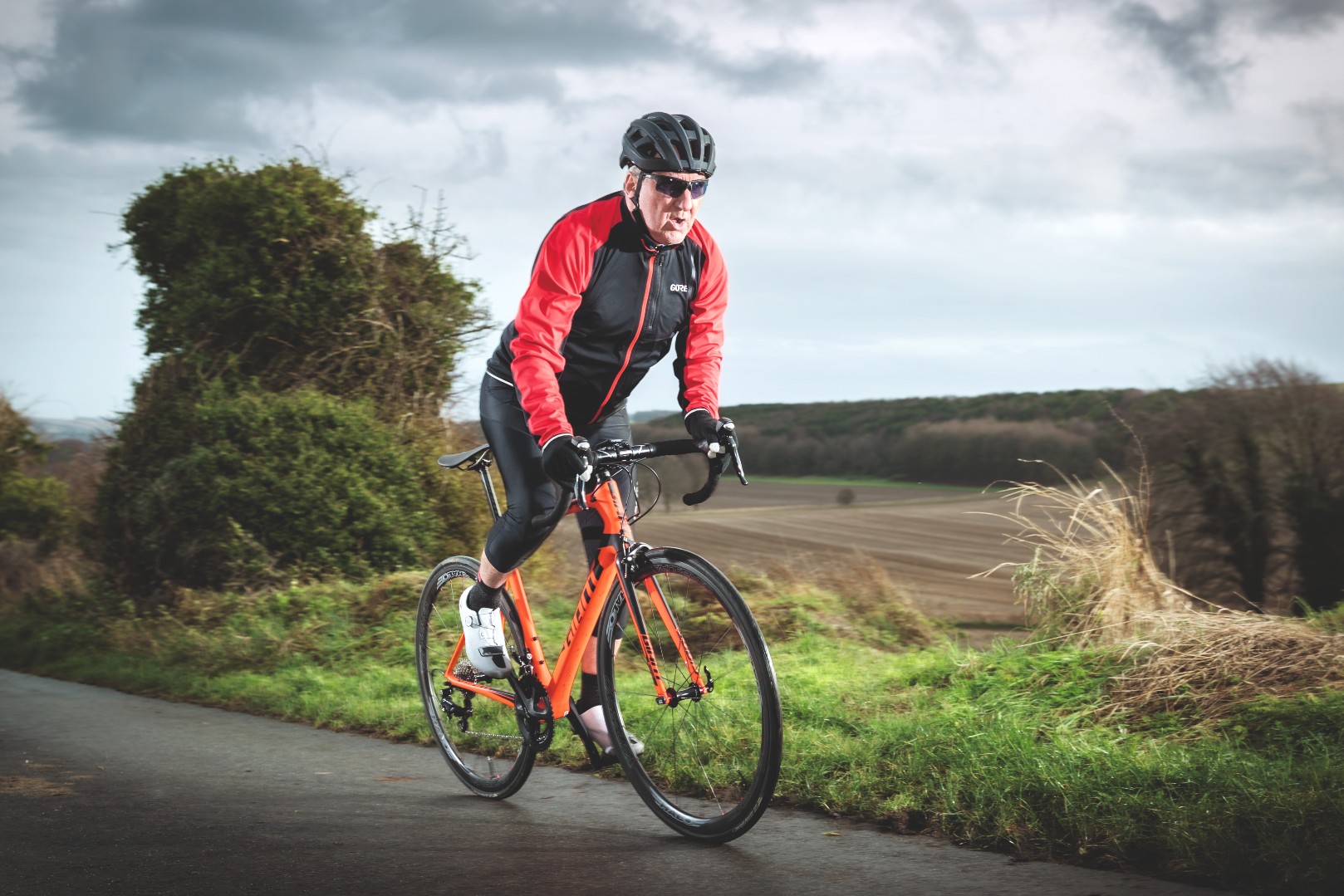Trek makes numerous FX models, including a 'standard' 3.0 Disc, but the Equipped lives up to its name with its raft of practical commuter-friendly accessories.
Along with wide-ranging 1x gearing and high-quality disc brakes – both from Shimano – you get a rear rack with a 25kg capacity, mudguards, front and rear lights, and even a kickstand.
Throw in an upright ride position and 32mm tubeless-ready tyres, and you've got one of the best commuter bikes, with enough versatility for longer, more adventurous rides come the end of your working week.
Trek FX 3 Disc Equipped frame details
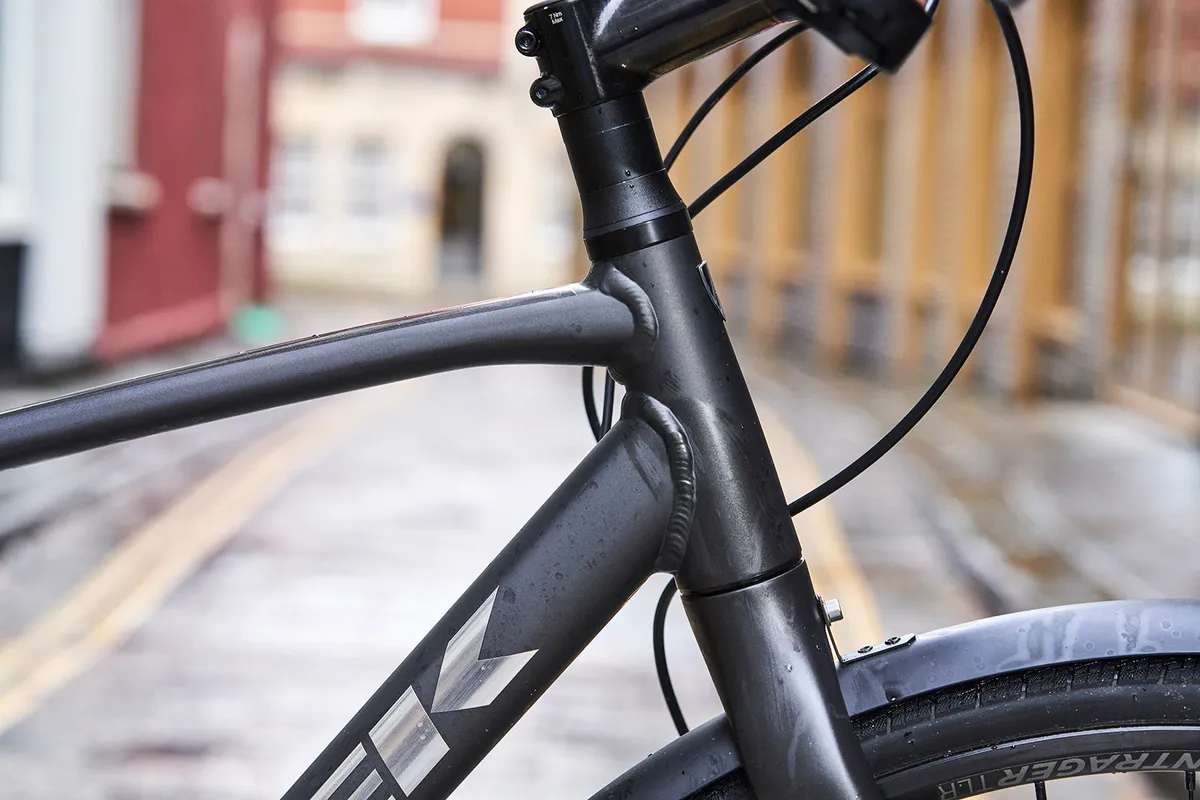
The FX 3 frameset features a familiar combination of a semi-compact aluminium frame and a carbon fork.
Both the frame and fork have pannier rack fittings, with one pair of bottle bosses on the down tube and one on the seat tube.
Trek has maximised its Euro-trekking credentials by speccing a kickstand bolted to the non-driveside chainstay.
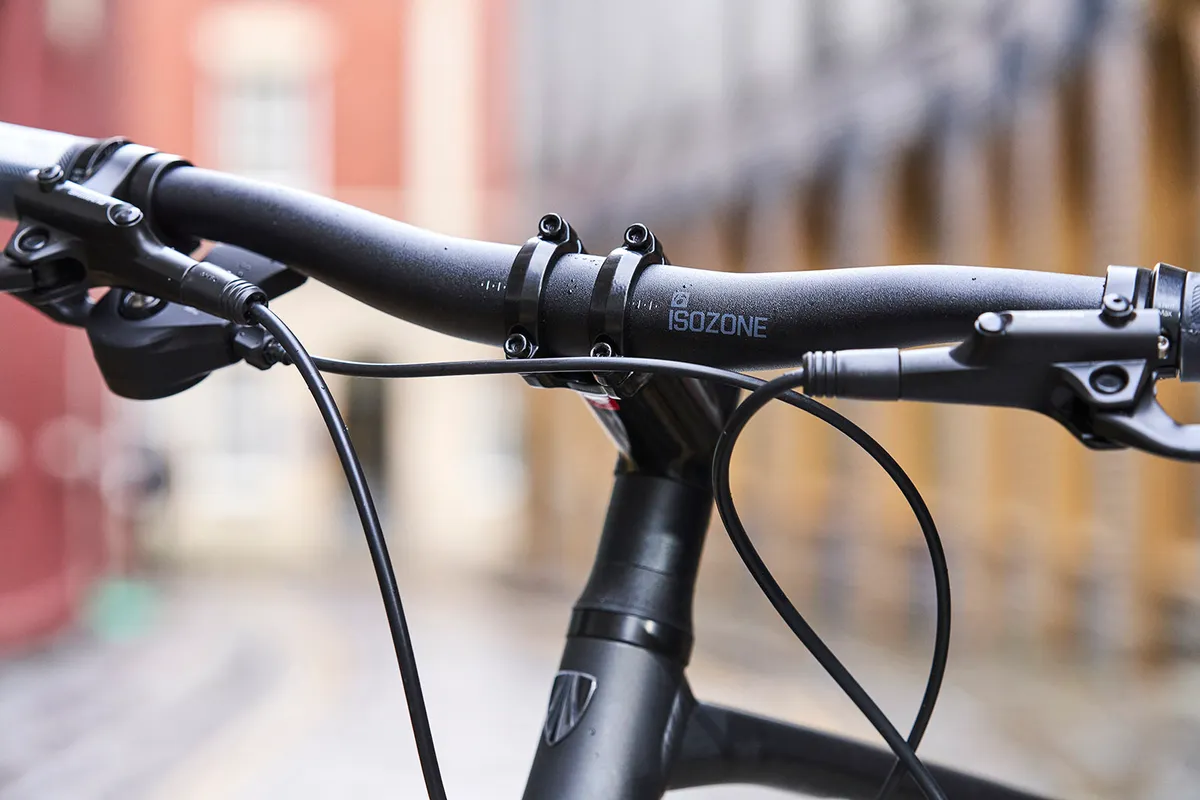
The frame profiles are also quite familiar, with a flattened, sloping top tube, oversized down tube and farly slim seatstays, though these aren't dropped below the level of the seat tube (a common attempt at improving comfort).
The build quality seems fine throughout, with chunky, strong-looking welds and a 'Matte Dnister Black' finish.
If a monochrome frame with silver decals isn't for you, the 'Viper Red to Cobra Blood Fade' lives up to its much more colourful moniker.
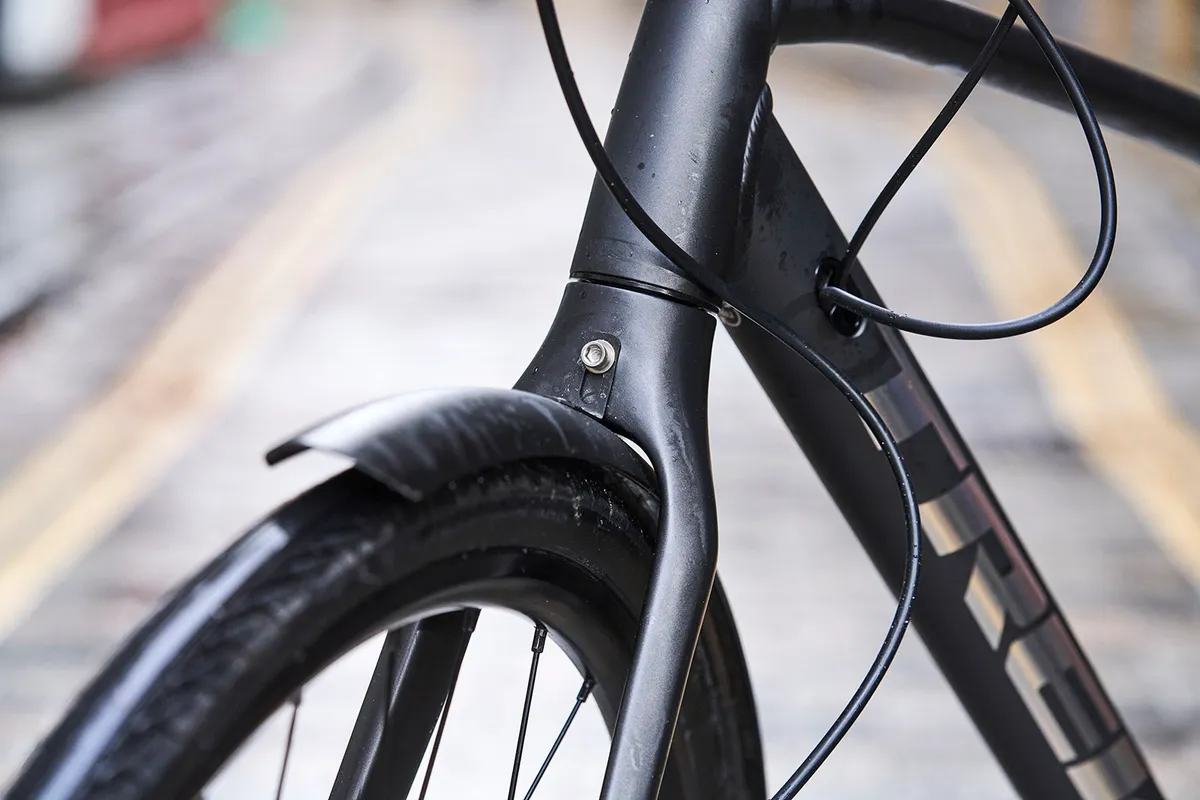
Unlike the also single-chainring Specialized Sirrus, there's no chain catcher.
Rather than dropouts designed for quick-release axles, the fork is based around Trek's own 'Thru-Skew' axle, which features a 5mm-diameter skewer that screws into a fitting in the other dropout.
I can't see a particular advantage over a standard quick-release axle, but it worked without issue.
Trek FX 3 Disc Equipped geometry
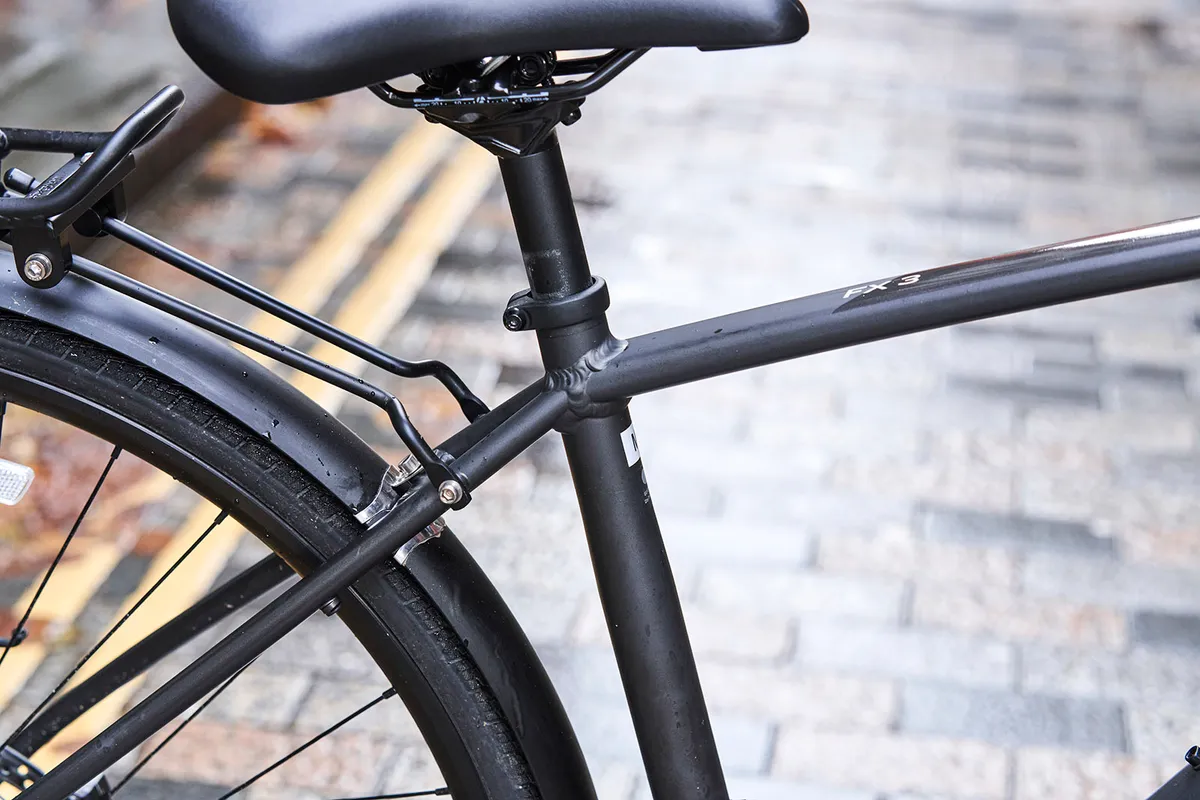
The Trek not only shares a lot of kit similarities with the Specialized Sirrus, the two bikes also have extremely similar geometry, with only a few millimetres here or there throughout, save for the Trek having a noticeably lower stack figure.
That said, both still have pretty upright riding positions.
The Trek’s tube angles are aimed towards stable, rather than sharp, handling.
Here, the stability is boosted by the long 1,060mm wheelbase (the Specialized Sirrus is imperceptibly longer at 1,067mm) in a size medium.
| | S | M | L | XL |
|---|---|---|---|---|
| Seat tube angle (degrees) | 74.5 | 74 | 73.5 | 73 |
| Head tube angle (degrees) | 70.5 | 71.5 | 71.5 | 72.5 |
| Chainstay (mm) | 450 | 450 | 450 | 450 |
| Seat tube (mm) | 381 | 445 | 508 | 572 |
| Top tube (mm) | 542 | 557 | 571 | 587 |
| Head tube (mm) | 115 | 130 | 160 | 190 |
| Fork offset (mm) | 50 | 50 | 50 | 50 |
| Trail (mm) | 75 | 68 | 68 | 62 |
| Bottom bracket drop (mm) | 65 | 65 | 65 | 65 |
| Bottom bracket height (mm) | 296 | 296 | 296 | 296 |
| Wheelbase (mm) | 1059 | 1060 | 1070 | 1070 |
| Standover (mm) | 704 | 738 | 799 | 848 |
| Stack (mm) | 539 | 557 | 586 | 618 |
| Reach (mm) | 393 | 397 | 398 | 398 |
Trek FX 3 Disc Equipped specifications
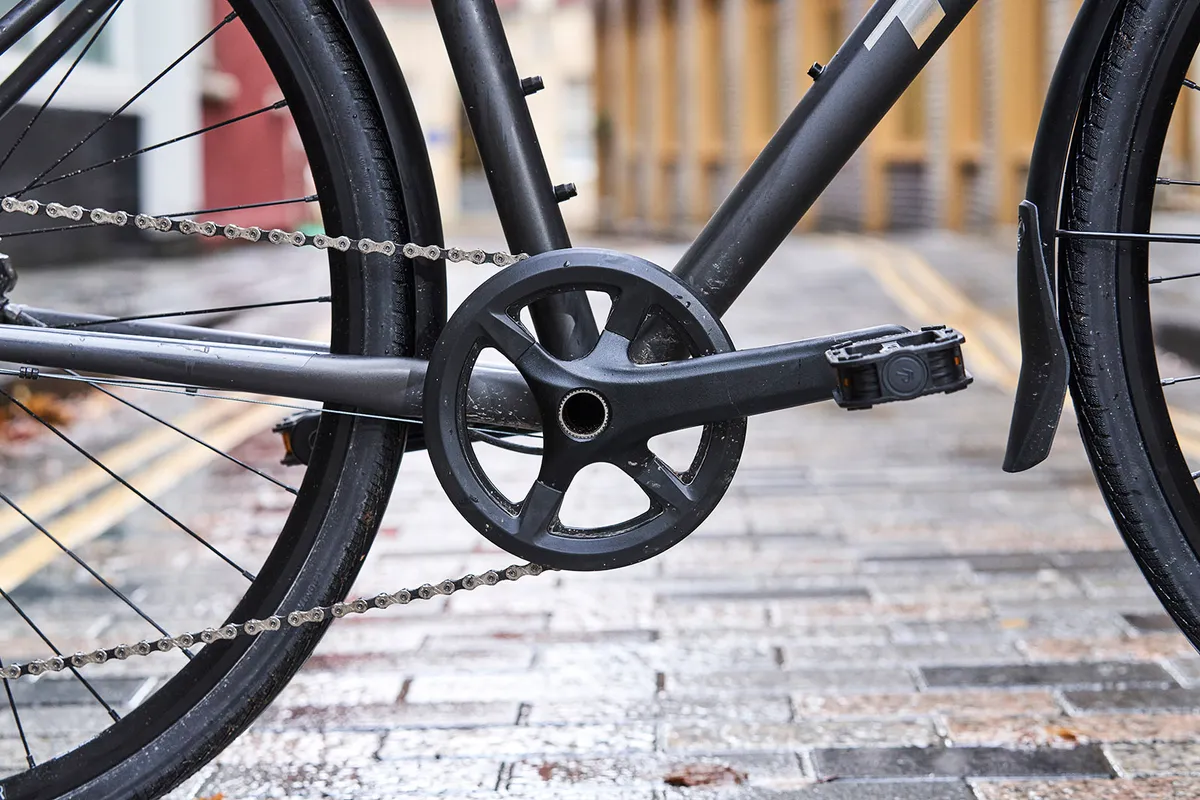
The 'Equipped' model lives up to its name with a full line-up of components that are usually extras.
Compared to the 'naked' FX 3 Disc that costs £1,025, the Equipped comes with full-length mudguards with mini mudflaps, a tough 25kg-capacity rear rack, and front and rear lights.
The lights themselves are modest – a USB-rechargeable AXA Greenline 35 front light that sits above the front mudguard and an AA battery-powered rear light on the back of the rack.
While it's nice to have them, I'd be tempted to use them in addition to a pair of more powerful rechargeable front lights rather than on their own.
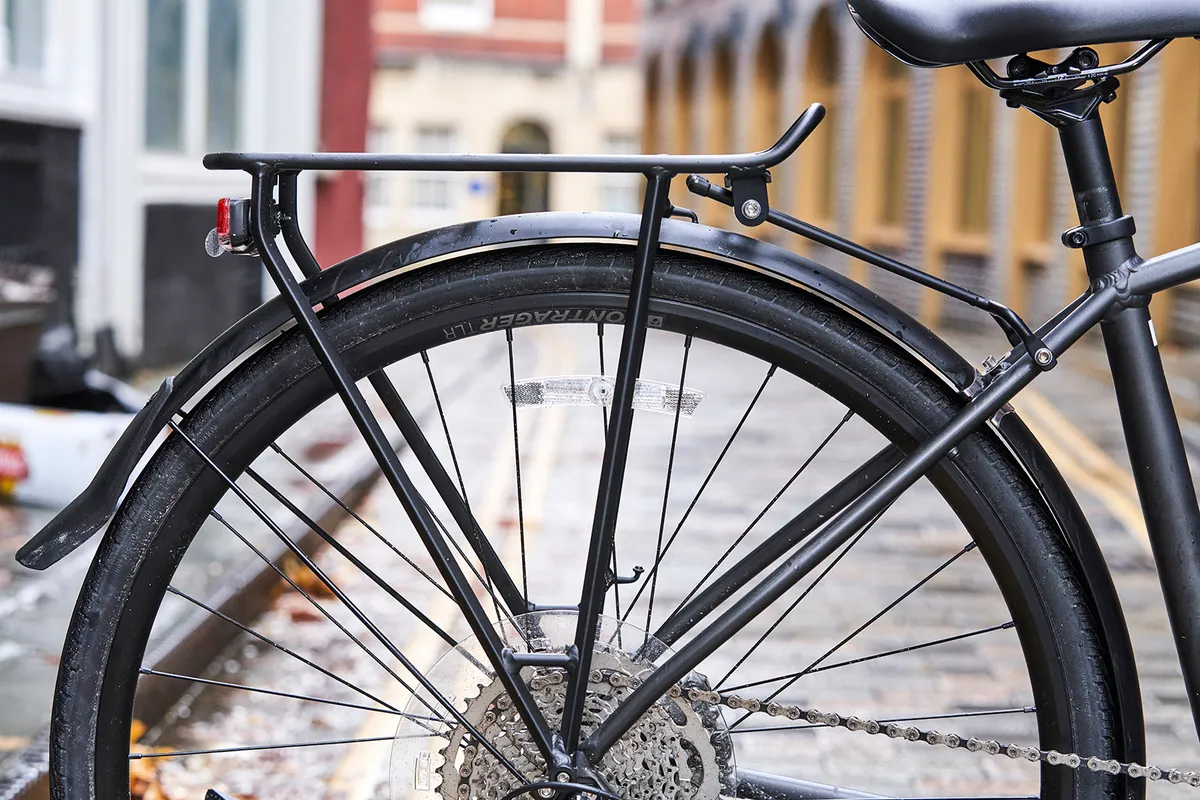
The rack proved solid as a rock, even when quite heavily laden. The mudguards were an equally welcome addition.
My testing included an entire weekend when the rain was both utterly relentless and virtually horizontal. While I got wet, I wasn't covered from head to foot in mud and muck from the towpath and woods.
I also got on very well with the wide and short Bontrager H1 saddle. It has a similar shape to the Specialized's Bridge – fairly short and wide, with a moderate cutout. It proved a perfect companion for the bike's upright riding position.
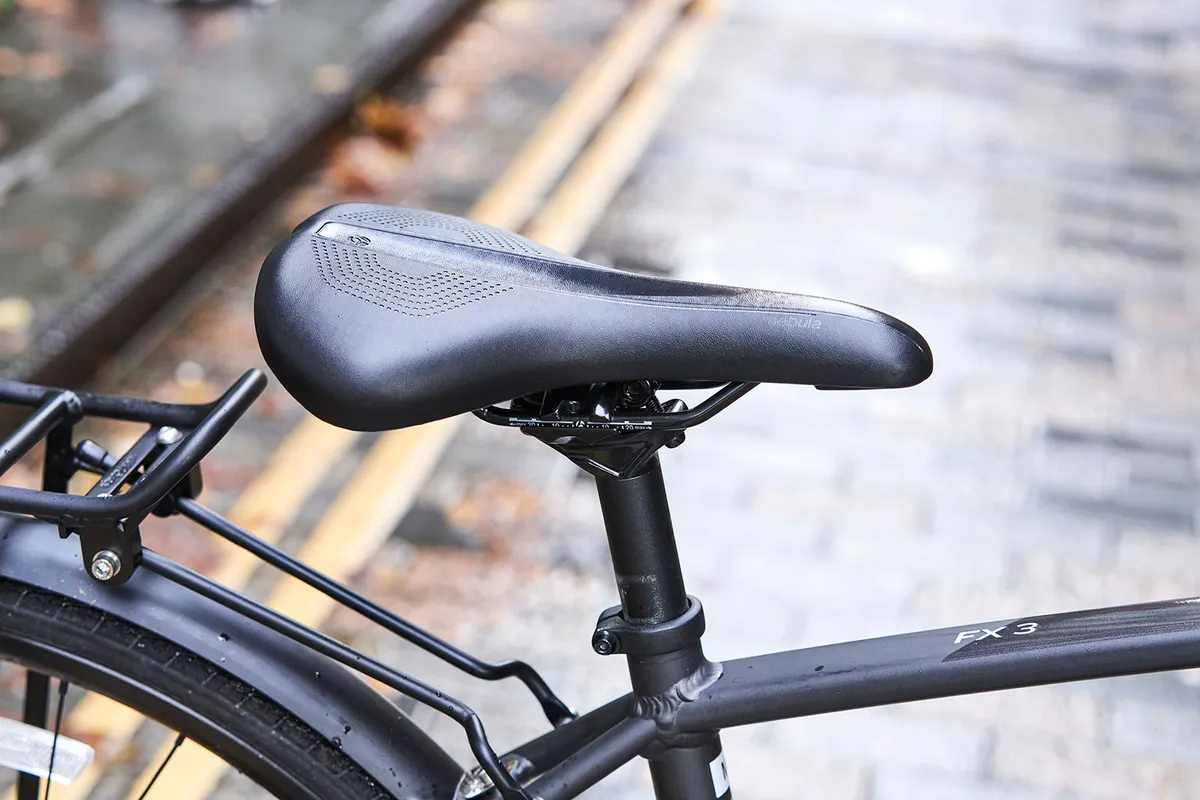
While I'd always fit bar-end grips on a flat-bar bike, the flattened Bontrager IsoZone grips proved extremely comfortable, more so than round grips.
As with the Genesis Croix De Fer 10 FB and Specialized Sirrus I tested it alongside, the Trek comes with disc brakes, and the excellent Shimano MT201 brakes are, quite simply, excellent.
The 1x Deore gearing sees a 40T crankset, with a 10-speed 11-46t cassette.
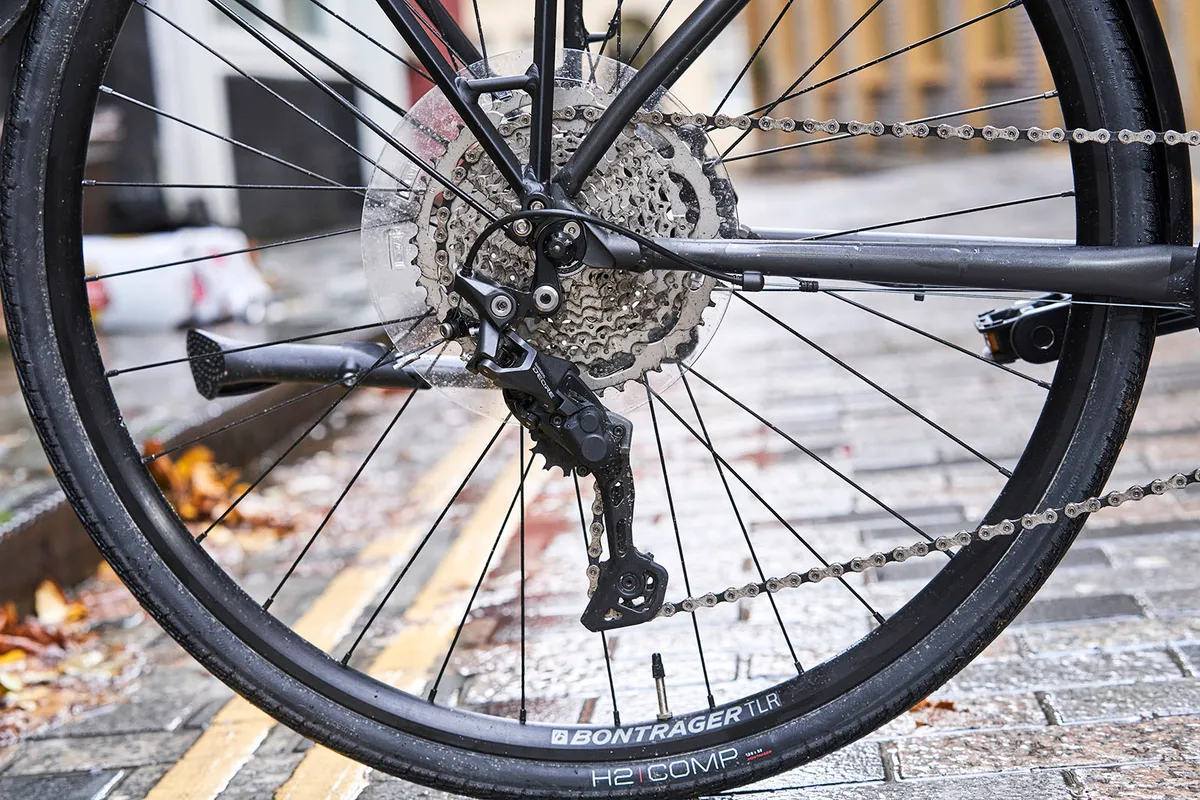
One could argue you can never have a bottom gear that's too low, and even my short commute home has an 11 per cent section. The 46-tooth sprocket was a welcome addition.
And while a tiny detail, I prefer a single four-bolt stem faceplate rather than the pair of vertical two-bolt plates Trek has plumped for.
These are ‘Blendr’-compatible though, which enables you to fit dedicated Bontrager bases for lights, computers and cameras.
Trek FX 3 Disc Equipped ride impressions
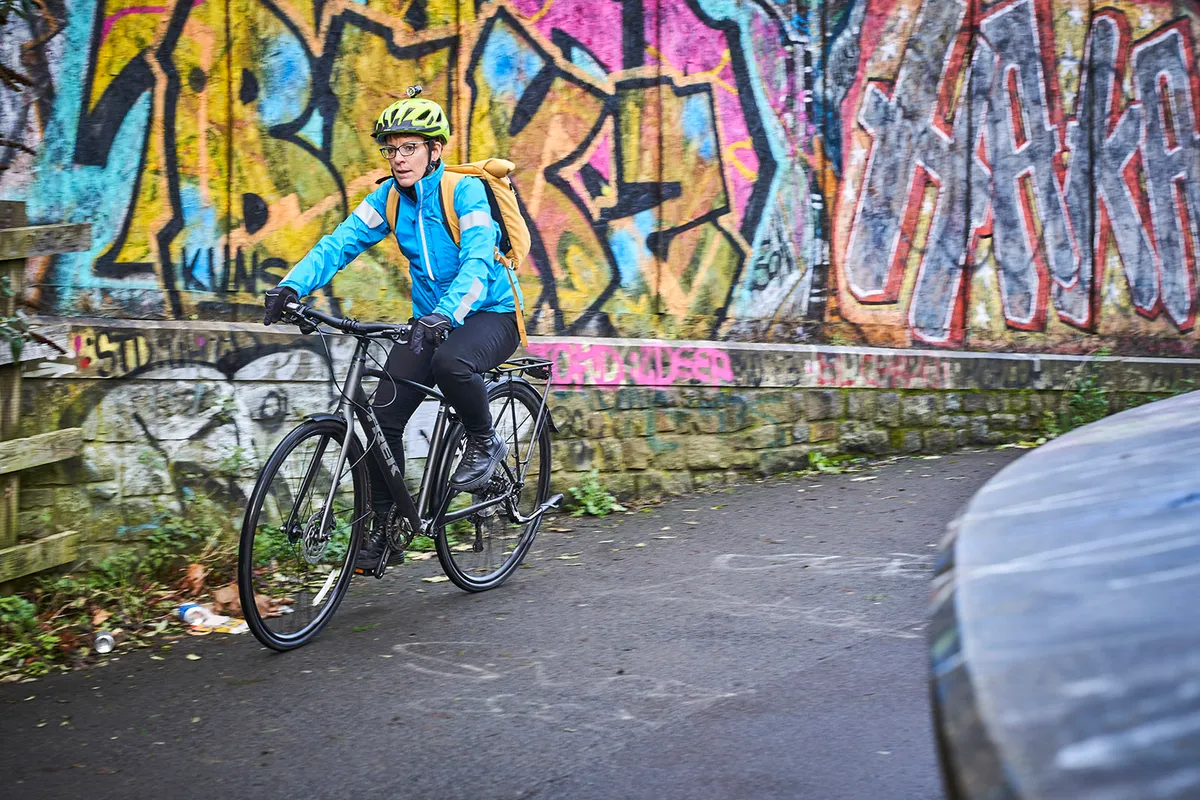
Trek calls its FX 3 "fast, fun and comfortable" and the marketing spiel's not a million miles away from the ride I experienced.
Its 32mm tyres are just about the ideal width for riding at a decent speed on bumpy British roads.
They offer a large enough air volume for decent comfort if the road's pock-marked and potholed, but without stealing any of your speed.
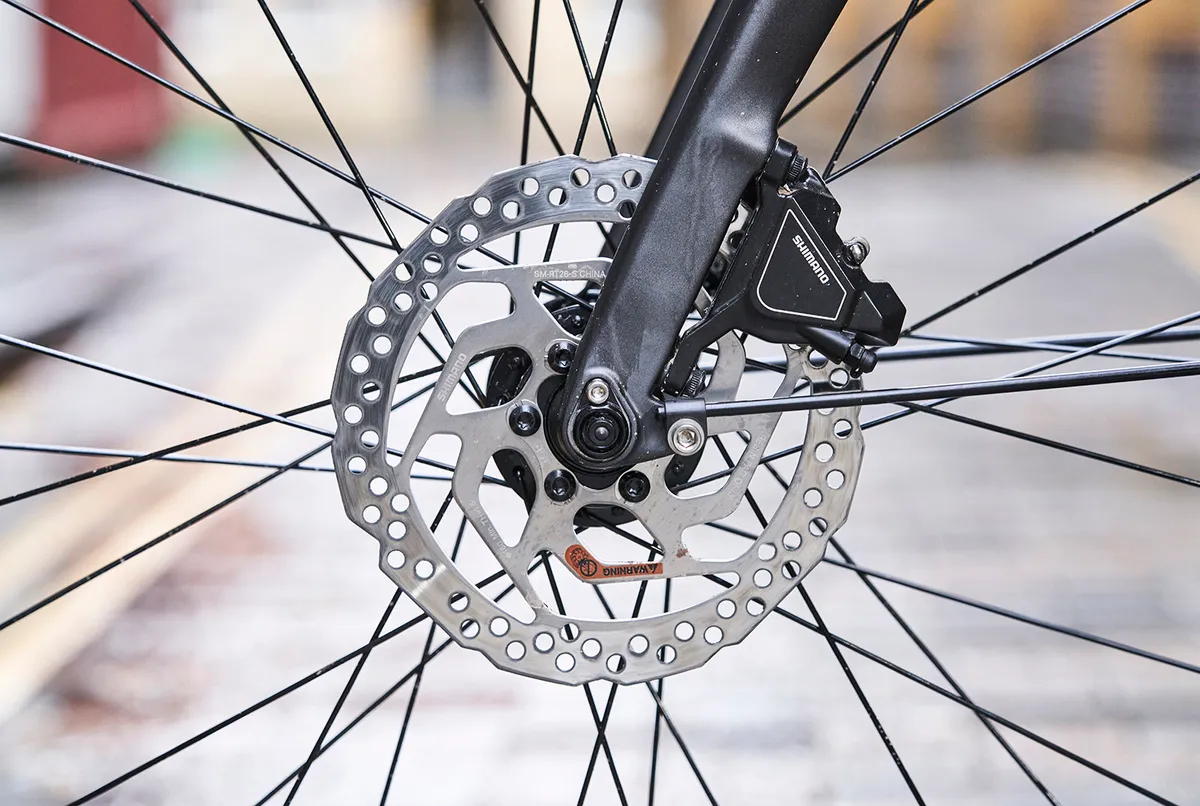
The Trek will take up to 35mm rubber while still running mudguards, or 38mm when you're fender-free, should you wish to go wider.
It nips along very nicely through city traffic and proved perfect for a 16-mile commute. However, the Bontrager tyres have enough grip on their shoulders so you're not slip-sliding on unsurfaced routes.
With its long wheelbase, you're not going to be zipping around obstacles at speed, but the handling was pleasingly neutral.
That said, I found it fun as well as functional – providing enough grip for muddy towpaths, while the excellent braking means you can descend at speed safely and confidently in all weathers (bar ice, of course).
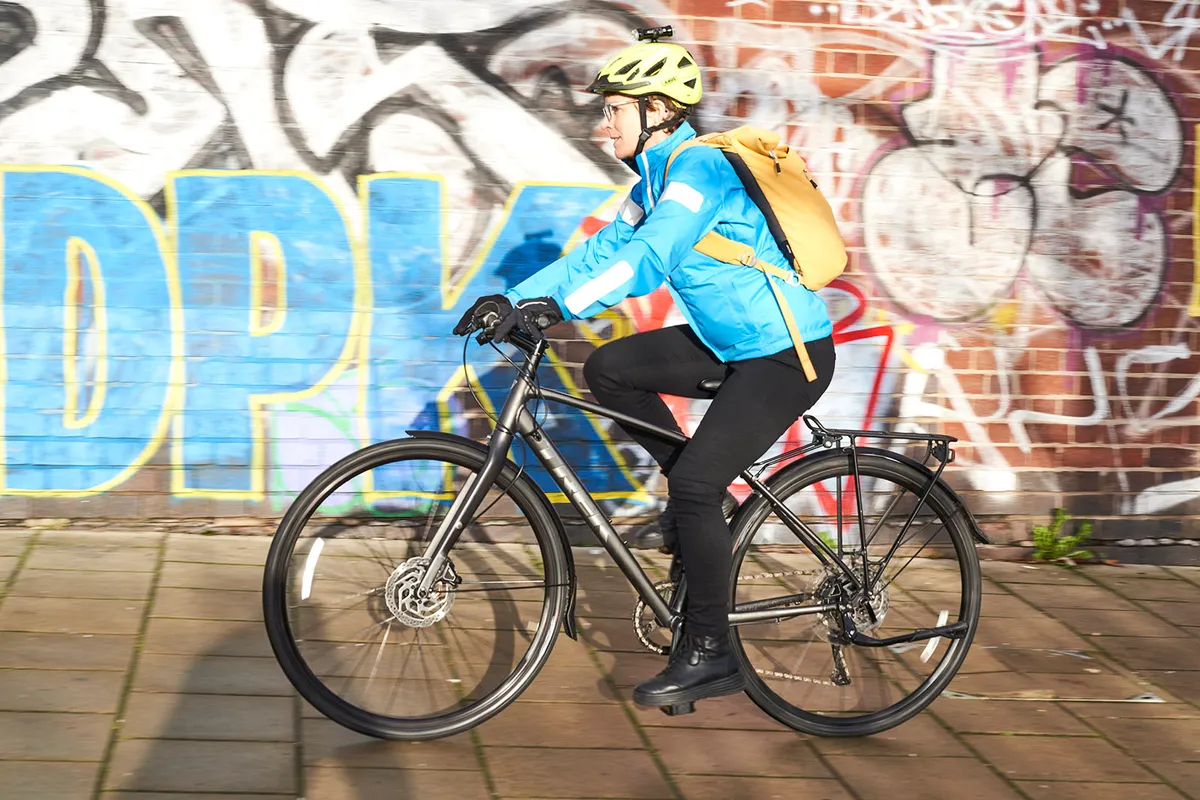
A decently low bottom gear and a reasonable weight help to make the Trek a decent climber too, though there's a bit of a jump to the largest, easiest 46-tooth sprocket.
You can stay in the saddle and if you want to get out and crank it up, the frame is stiff enough to not waste your effort.
Trek FX 3 Disc Equipped bottom line
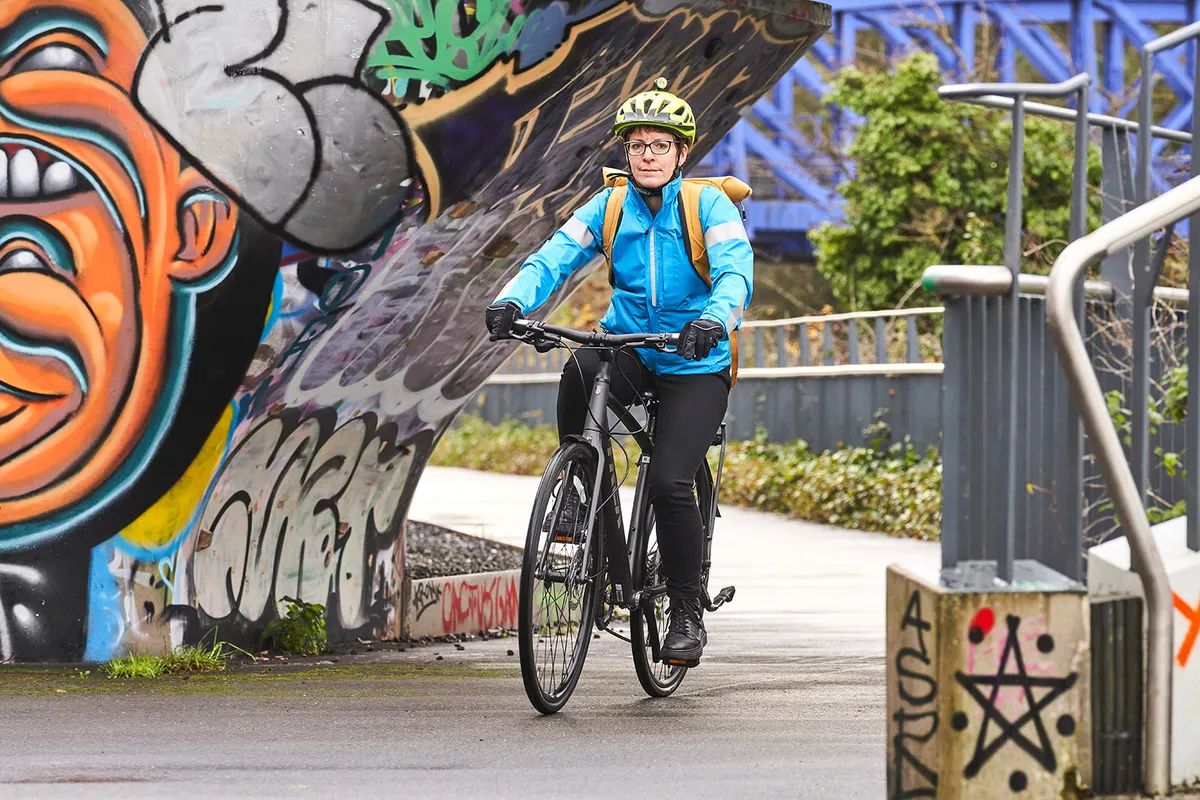
While the Trek FX Disc Equipped lights are quite modest, straight out of the box this Trek has pretty much everything you need for the commute or day-to-day leisure riding.
The FX Disc Equipped would be great for long commutes and pretty much any day-to-day riding – and even use as a light touring bike.
Good contact points polish the build and keep it comfortable.
Product
| Brand | Trek |
| Price | €1229.00, £1100.00 |
| Weight | 12.38kg |
Features
| Fork | FX Carbon, rack and mudguard mounts, flat-mount disc |
| Stem | Bontrager Comp 31.8mm, Blendr compatible, 7-degree, 90mm |
| Chain | KMC X10, 10-speed |
| Frame | Alpha Gold Aluminium, DuoTrap S-compatible, internal cable routing |
| Tyres | Bontrager H2 Comp, wire bead, 30 tpi, 700x32c |
| Brakes | Shimano hydraulic disc, MT201 lever, Rotors - Shimano RT26, 6-bolt,160 mm |
| Cranks | Prowheel alloy, 40T narrow-wide ring, 170mm |
| Saddle | Bontrager H1 |
| Wheels | Bontrager Tubeless Ready Disc |
| Shifter | Shimano Deore M4100, 10-speed |
| Cassette | Shimano Deore M4100, 11-46, 10-speed |
| Seatpost | Bontrager alloy, 27.2mm |
| Grips/tape | Bontrager Satellite IsoZone Plus, lock-on, ergonomic |
| Handlebar | Bontrager Satellite Plus IsoZone, alloy |
| Bottom bracket | Sealed cartridge |
| Available sizes | S, M, L, XL |
| Rear derailleur | Shimano Deore M5120 long cage |
| Features | Extras: 25kg capacity rear rack AXA Greenline 35, USB rechargeable front light Spanninga SOLO rear light Eurofender Snello mudguards rear alloy kick stand |
